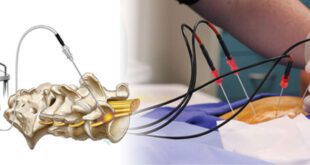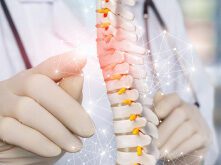Dr. Matherne of BayCare Medical Group Discusses the Risks Associated with Hernias
Do you have a lump or bump in your abdominal area or groin that you’ve been ignoring? If so, it’s important to get it checked by your primary care physician. Why? Well, it could be a sign of many different conditions, it could be nothing to worry about, or it could be a hernia. Hernias are very common, affecting over 20 million people in the U.S. each year. If they are not evaluated properly, they can lead to harmful conditions.
Hernias can range in severity and symptoms, for this reason, it’s essential to see a specialist to determine if you need treatment.
Common Types of Hernia
• Inguinal (inner groin)
• Incisional (resulting from a surgical incision)
• Hiatal (upper stomach)
• Femoral (groin/hip)
• Umbilical (belly button)
We caught up with Dr. Louis Matherne of BayCare Medical Group to find out more about the potential Risks of hernias.
“Many patients are unaware of the risks associated with hernias. “A common misconception is that it’s okay to watch and wait without an examination by a specialist. It’s critical for anyone with a hernia to see a general surgeon who can evaluate their level of risk. It’s not always necessary to have surgery, but we are experts on the natural progression as well as the repair of hernias and can discuss the risks and benefits of proceeding with surgery or watchful waiting with each individual patient.
“I’ve also been asked if hernias ‘go away on their own.’ They can remain relatively stable and cause minimal or no symptoms, or they can increase in size, but in adults they never get smaller or go away. As they increase in size, they can become more symptomatic for patients and possibly more complicated.”
What are some of the symptoms patients should be aware of concerning hernias?
“Individuals may notice a lump or bump. Commonly, we see hernias near the belly button, but they can appear anywhere in the abdominal or groin regions. It’s also common for people to notice the hernia and feel pressure, pain, or discomfort when their abdominal area is stressed or under increased pressure due to exercise, lifting something heavy, straining, or even standing for long periods. If the bulge at a hernia site feels stuck with little movement, there is increasing pain, or if there’s discoloration of the skin overlying the bulge, the patient should be seen by their doctor for evaluation of the situation. It may be a sign that it’s lacking blood flow – which could lead to bowel ischemia and even perforation. If a hernia is obstructed, there may be increased swelling, nausea, vomiting, or lack of bowel movements. Either of these situations can pose potential health risks.”
“With scheduled surgery we are often able to treat hernias through a minimally invasive laparoscopic procedure or with robotic assisted surgery, which is ideal for outcomes and healing. It’s always best to be proactive about any lumps or bumps that an individual may have, especially if there are any new or worsening symptoms with the hernia.”
Minimally Invasive treatment
Laparoscopic hernia repair is a minimally invasive method that typically utilizes three ports. The camera allows the surgeon to view the operating field on a monitor, and to visualize the organs and instruments with clarity, providing optimal outcomes.
The Benefits of Laparoscopic Surgery
• Quicker recovery times
• Minimal scarring
• Minimal discomfort
• Optimal outcomes
Robotic Surgery:
It may still sound a little futuristic to some, but more than 3 million people worldwide have had remarkable outcomes due to the advanced technology and sophistication of robotic-assisted surgery.
What are the benefits? In short, robotic surgery is a minimally invasive method that typically utilizes a few small ports, as opposed to a full incision. The 3D video technology is magnified to the highest-definition. The surgeon controls tiny instruments that can twist, bend and rotate in ways that no human hand could ever orchestrate the conventional surgical instrumentation. The surgeon can visualize the field at a greater magnification and has unprecedented control from the monitor to move the tools with ease. It is by far one of the most significant advancements to affect the medical world over the past century.
Benefits
• Quicker recovery times
• Improved visual magnification for the surgeon
• Precise placement of device
• Minor scarring
• Minimal discomfort
• Proven results
• Advanced outcomes
Dr. Louis Matherne specializes in general surgery in Lutz, Florida. Dr. Matherne received his undergraduate degree in biomedical sciences from the University of South Alabama in Mobile, Alabama and then earned his Doctor of Medicine from Ross University School of Medicine in Dominica, West Indies. He continued his medical education by completing an internal medicine internship at New York Methodist Hospital in Brooklyn, New York and a general surgery residency at The Jewish Hospital in Cincinnati, Ohio. Dr. Matherne’s clinical interests include general surgery, with an emphasis on the use of robotics. He is a member of the American College of Surgeons. Dr. Matherne is affiliated with St. Joseph’s Hospital-North.
BayCare Medical Group
General Surgery (Van Dyke)
4211 Van Dyke Rd Ste 200, Lutz, FL 33558
(813) 264-6490
 Central Florida Health and Wellness Magazine Health and Wellness Articles of the Villages
Central Florida Health and Wellness Magazine Health and Wellness Articles of the Villages


